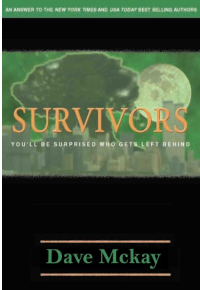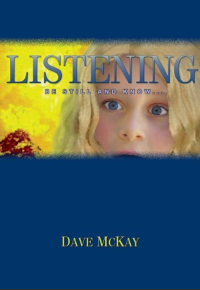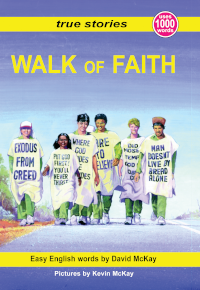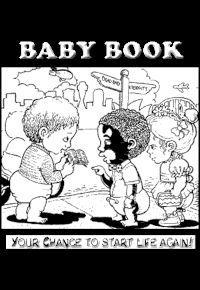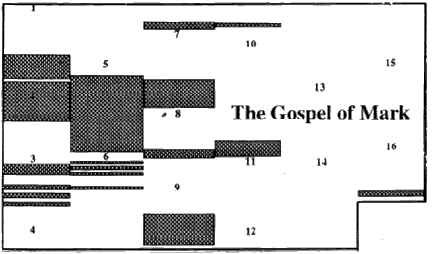 The shaded areas show the relative length of passages that refer to healing miracles of Christ. As you can see, whole chapters are taken up with describing his healings, all of which appeared to be miraculous.
The shaded areas show the relative length of passages that refer to healing miracles of Christ. As you can see, whole chapters are taken up with describing his healings, all of which appeared to be miraculous.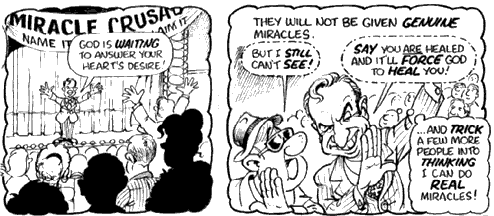
We should start by noting that the Bible was written during the time of "primitive medicine". The primitive belief that disease is a form of punishment from God is one of many that Christ challenged (see John 9:1-3). Primitive medicine taught much that Christ could not endorse. But he did seem to endorse basic forms of treatment that have been practiced by primitive practitioners, modern medical practitioners, and alternative practitioners as well. He certainly did not limit himself to lightning from heaven as the cure for all ailments.
Even in the passage that we quoted at the beginning of this article (Matthew 10:7-8) Jesus says "heal the sick, ...cleanse the lepers, raise the dead, cast out devils." He lists several different forms of human suffering, and he suggests slightly different ways of dealing with each.
People claiming to have healing gifts today are not exempted from the need to communicate genuine concern for each patient as a unique individual. Yet the most abrupt doctor could hardly be more impersonal than televangelists who hold their hands over bags of unopened mail, asking God to "meet every need" before teams of volunteers tear into the envelopes to extract all the money in them!
What are some treatments Christ used? and are they any different from the treatments of traditional healers or of modern doctors?
Healers in every age have all relied on a very short list of treatments all of which are hinted at in passages from the New Testament. We have listed the five major forms of treatment showing how they relate to primitive, modern, alternative, and Christian healing practices. It becomes clear that Christian healing is intended to function confidently alongside all of the others, incorporating whatever other treatments are helpful in bringing about a successful healing.
I. Medicines
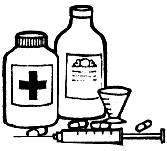 Medicines are usually ingested through the mouth (whether tablets, liquids, solids, or gases), but they may also be applied through the pores of the skin (lotions and balms), injected, or administered in the form of eyedrops, eardrops, or suppositories. Primitive practitioners used everything from herbs to powdered animal bones to create potions. Modern medications tend to be synthetically produced and to come from big drug companies. They include such things as antibiotics and analgesics. Alternative treatments include aromatherapy and "natural" (e.g. herbal) medicines.
Medicines are usually ingested through the mouth (whether tablets, liquids, solids, or gases), but they may also be applied through the pores of the skin (lotions and balms), injected, or administered in the form of eyedrops, eardrops, or suppositories. Primitive practitioners used everything from herbs to powdered animal bones to create potions. Modern medications tend to be synthetically produced and to come from big drug companies. They include such things as antibiotics and analgesics. Alternative treatments include aromatherapy and "natural" (e.g. herbal) medicines.The New Testament makes several references to "anointing" patients with "oil". James instructed early church leaders to do this when fellow Christians were sick (James 5:14). When Christ sent the disciples out with instructions to heal the sick, Mark tells us that they "anointed with oil many that were sick, and healed them." (Mark 6:13)
Although they did not have modern wonder drugs, the disciples were told to use what primitive knowledge of medicine they had. In the story of the good Samaritan, Jesus says that he went to the injured man "and bound up his wounds, pouring in oil and wine..." (Luke 10:34)
Alcohol (i.e. "wine") is still used to cleanse wounds today. On at least one occasion Christ applied some form of primitive medication to the eyes of a blind person (John 9:6-7). From these references, it would seem that medication is a legitimate part of Christian healing. Certainly throwing out modern medicine because of corruption in the medical profession is like discarding the baby with the bath water.
II. Manipulation
Doing various things to the external body has always been a form of healing treatment.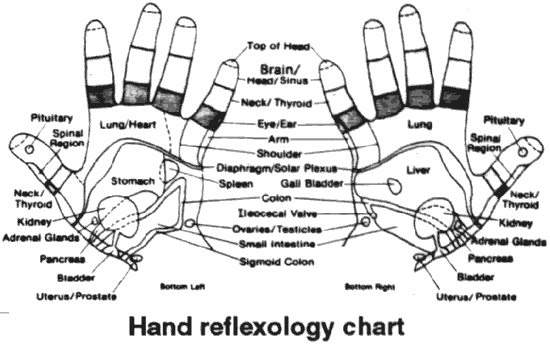
Physical touch is helpful in relation to such things as setting bones, or massaging sore muscles and joints. But it is also important, along with any other form of treatment, as an expression of love.
Modern research has shown that patients respond more favourably when they experience human touch along with the treatment. This is a vital role of the nursing profession. It is no surprise that, with Christ's emphasis on love as the ultimate Christian service, his healings were often accompanied by human touch (Luke 4:40).
In some cases, like the woman with the deformed back or the deaf mute, it seems quite natural to touch the ailing body part (Luke 13:13, Mark 7:32-33).
"Laying hands" on people may be a visible way of demonstrating God's supernatural power flowing from the healer to the patient. But our hands should communicate more than magic; they should convey true Christian love. And they should be a practical expression of that love as well. Certainly when the good Samaritan "bound up" the wounds of the injured man, he was, by doing this, actually "laying hands" on the man, even though he probably did not see anything supernatural about it at the time. (See Mark 16:18 & Acts 18:8)
Are we prepared to touch the lepers and prostitutes of today's world? Are we prepared to roll our sleeves up and get our hands dirty to help the world's needy? If we are, then we can bring real healing. But if we'd rather stay in our antiseptic churches and just "pray" without getting involved, our prayers will be ineffectual.
III. Mutilation
Circumcision is the most widely practiced form of mutilation; however many tribes cut other parts of the body as a means of letting out evil spirits or substances. Centuries ago holes were drilled into the heads of people suffering from mental disorders in an effort to let out the demons that were tormenting the patient.With increased knowledge of human anatomy, modern medicine has delved further into the body in an effort to cut out or correct abnormalities through surgery. Over-use of the scalpel by modern surgeons has led to a reaction against such "unnatural" practices by alternative movements. Acupuncture is a much tamer form of mutilation, and, as such, is growing in popularity amongst those seeking alternative treatments.
Apart from the Old Testament practice of circumcision, there is little reference to mutilation in the Bible. This is understandable, considering that surgery was not practiced at that time, and what little mutilation did exist probably did more harm than good. However, Christ speaks graphically of "cutting your hand off" or "plucking your eye out" if it "offends" you (Mark 9:43-48). He was stating that drastic steps are sometimes necessary in order to protect against even more drastic consequences. This is the basic reasoning behind prudent use of surgery.
IV. Metaphysical Activities
Primitive practitioners excelled in the area of metaphysical activities to assist their patients. They were fond of shaking rattles or waving feathers over patients or performing any number of other rituals to ward off evil spirits. Often no physical contact was made with the patient, and yet the patient's belief in the presence of a supernatural protection often achieved more than all of the other treatments combined.This is where modern medicine has been most lacking. The nearest things to intangible treatment for diseases today would be x-rays or hypnosis. Because science has proven to be so much more effective than superstition, doctors often overlook the need for patients to have faith in anything higher than themselves.
Alternative medicine has sought to restore the spiritual dimension to healing, but often with pseudo-scientific jargon about such things as force fields and auras. Meditation, chanting, and calling on various spirits are also part of the alternative revival.
Prayer to an all-wise all-powerful loving God is the simple Christian answer. This includes prayer by the healer as well as by the healee. Every effort should be made to communicate the fact that an unseen God is operating through the other practical treatments being offered by Christians as well (i.e. through whatever "oils" they prescribe and through the work of their "hands"). Which brings us to the last point...
V. Messages
Teaching of some sort always forms a part of healing. Some teaching simply aims at making people aware of the need for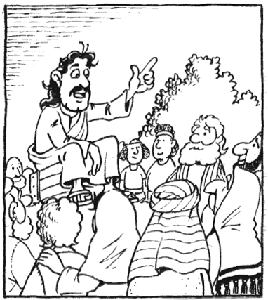 the other forms of treatment available (e.g. lectures on nutrition, family planning brochures, well baby clinics, etc.). However teaching can also deal with factors not covered by other treatments.
the other forms of treatment available (e.g. lectures on nutrition, family planning brochures, well baby clinics, etc.). However teaching can also deal with factors not covered by other treatments. Tribal laws enforced certain behaviours and defined certain taboos in primitive societies. These teachings helped to "socialise" the general public. Such topics come under the heading of "mental health" today. Socialisation is now achieved through the help of psychologists, counsellors, and health educationists.
Each healing approach has its own special emphasis, whether it is preaching the need to stay away from "unclean" people, situations, and foods, advocating rest, hygiene, and good nutrition, or extolling the wonders of vegetarianism. Teaching is so much a part of healing that the word "doctor" (from the same root word as "doctrine" or teaching) actually means "teacher" (which is why people can be doctors in other fields besides medicine).
Christian teaching stresses the need to deal with feelings of guilt, to know that you are loved, and to believe in a life after death. All of this is not separate from the healing ministry, but rather it is very much a part of it. More will be said on this in the next section.
